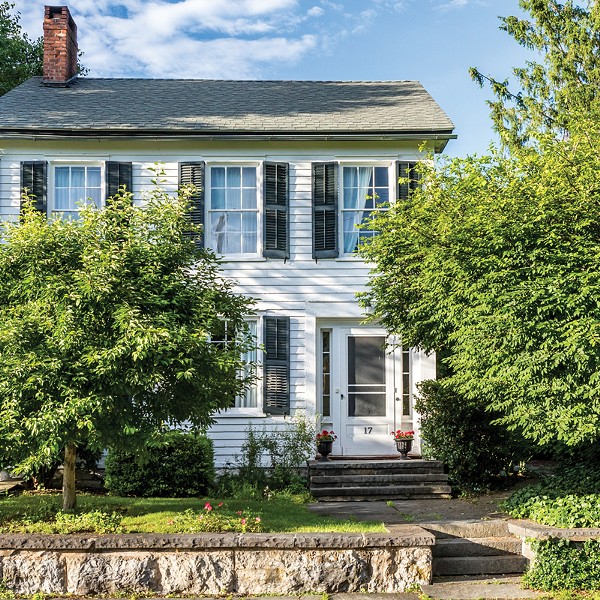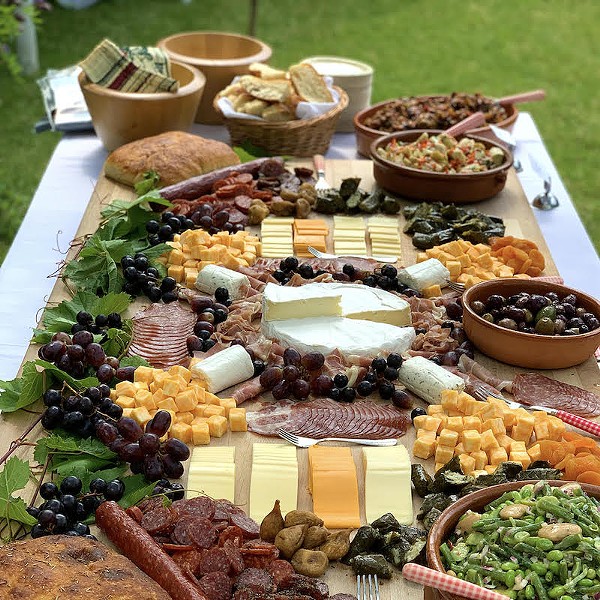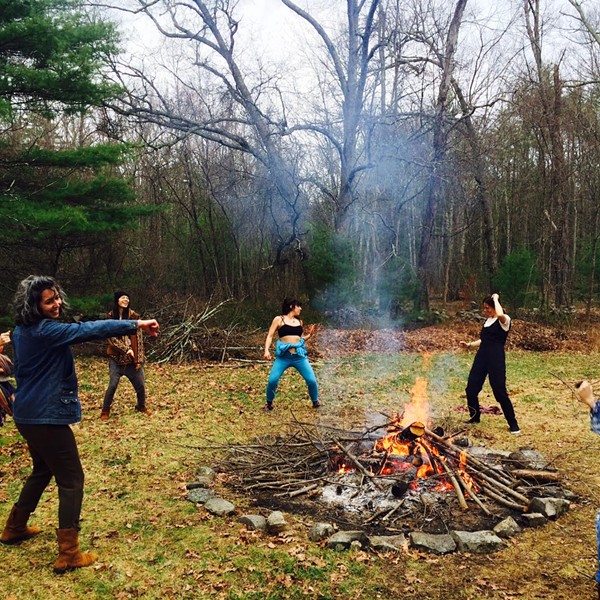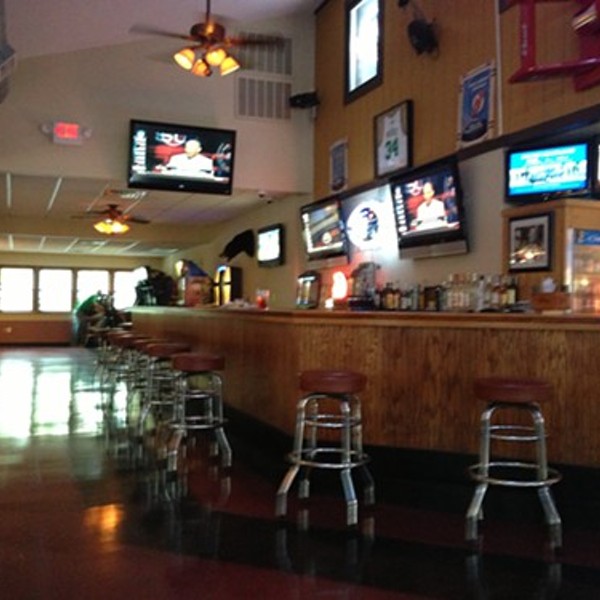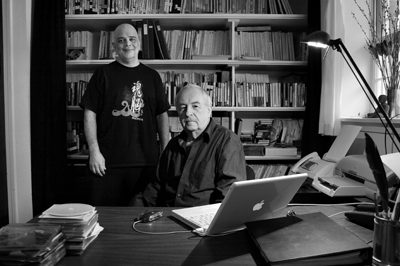
Behind the hubbub, though, there’s a silently echoing presence, an invisibly imposing backdrop. Stand in the temple-like main space, and ghostly electric vibrations rise up through the soles of your feet until they float through the roof of your skull, rustling the air just outside your ears. Long ago, artistic events of a much different kind happened in this space, on these grounds. Events that forever reshaped the spheres of jazz, experimental, and world music; events that continue to resonate loudly today.
Twenty-four years ago, this place was the last official incarnation of the renowned Creative Music Studio, an institution begun in 1971 by composer, vibraphonist, and pianist Karl Berger, his wife, vocalist Ingrid Sertso, and jazz legend Ornette Coleman as a haven for the intimate study of improvised music. The collective energy of the incredible names who taught, studied, and performed here—Cecil Taylor, Donald Cherry, Anthony Braxton, Lee Konitz, Abdullah Ibrahim, Jack DeJohnette, Jimmy Giuffre, Carla Bley, Babatunde Olatunji, the Art Ensemble of Chicago, and many others—is hot enough to melt the needle right off the meter. The musicians and students lived side by side for weeks, sometimes months, at a time in the guest rooms and cabins. They collaborated on music outside of the classroom, ate meals together, socialized, and gave free outdoor concerts in the surrounding towns and on the old athletic field across the road. As former student Robert E. Sweet describes it in his 1996 book on the retreat, Music Universe, Music Mind (Arborville Publishing), CMS, which closed due to lack of funding in 1986, sounds like it was pretty much heaven on Earth for jazz lovers.
“It was a very special place,” says Berger in his Woodstock dining room today. “There was music everywhere. It wasn’t really a school, with all of those dusty old music teachers pushing exercises and charts. It was more like a workshop, where you had people like Braxton and [Miles Davis bassist] Dave Holland coming in fresh off the road to teach and play with the students. And we would record everything. ‘Practice, record, listen’—that was the process. Every Monday night we’d have listening sessions, where we would go back and study the tapes we’d made the week before.”
It’s these very tapes of classroom sessions, along with those of numerous CMS-related concerts, that make up the nearly 400 audio and video archival recordings slated for digitization by engineer Ted Orr and eventual release by the Creative Music Foundation, a group set up by Berger, Sertso, and the Planet Arts label to preserve CMS’s recorded legacy. To raise the $120,000 needed for this mammoth effort, the foundation is drawing on funding from grants, private contributions, and benefit concerts like the one that will take place this month in Woodstock. “In the 1970s and ’80s, the music industry dictated what artists could play on their records,” explains Berger. “But when these same musicians were at CMS they could play whatever they wanted to play. So there are whole bodies of work by these artists that consist of music that was only done in the moment, music that is not represented on the records they made at the time. [The archive project] is a way to rewrite that history.”
Berger’s own history begins in his childhood home of Heidelberg, Germany, where he was born Karlhanns Berger in 1935. “[Heidelberg] is a beautiful place,” he says. “The American forces wanted it for their post-war headquarters, so they didn’t bomb it up too badly.” When the military bases moved in, with them came weekend jazz clubs that featured visiting US artists. “It was like growing up in New York, getting to meet and play with all of these amazing musicians,” Berger recalls.
One amazing musician Berger met at the time was Sertso, who hailed from Munich. Among other commonalities, the two shared a love of the revolutionary new free music of Ornette Coleman, and when they learned that frequent Coleman sideman Donald Cherry was performing in Paris they quickly lit out for the European jazz mecca. In a stroke of made-for-TV scripting, the driven Berger met Cherry the day the couple arrived and was playing in the trumpeter’s band the next night. Sertso and Berger soon forged a deep alliance with Cherry, who introduced them to Buddhism and in 1966 brought them to New York, where they found steady work in the clubs and in another, perhaps unexpected, area: the public school system. In a program called Young Audiences, which also included John Coltrane bassist Reggie Workman and saxophone innovator Sam Rivers, Berger played for sixth-graders and demonstrated improvisation by working off melodies the students supplied. Next, after hearing that the iconic composer John Cage (a future CMS guest instructor, coincidentally) was about to give up his position teaching “chance composition” at the New School of Social Research, Berger conceived a course on improvisation, pitched it in a letter to the college, and was accepted as a teacher. He taught the course for five semesters, an experience that by 1971 led him to a new mission.
“[The New School class] and the Young Audiences program had shown me there was so much untapped creative potential in the students,” Berger says. “But it wasn’t being addressed in the educational system at all. [The system] was only about the material aspects [of music]—just the notes, ensemble playing, copying solos, all that. But then, as now, [the system] fails to foster personal creativity when it wants to unfold and flourish.” He and others discussed the concept of starting an organization to do just that, one they wanted to call the Creative Music Foundation. Berger approached Coleman for help, and the saxophonist readily agreed to be a cofounder. “If it wasn’t for Ornette, we wouldn’t have done any of this,” says Berger, stressing the importance of Coleman’s encouragement.
So with the blessing and support of the father of free jazz in hand, Berger went looking for a place to begin holding classes. Early on, he realized it couldn’t be in New York. “[Improvised] music really has to start from silence,” Berger explains. “Of course, people play it in New York and other cities, but when you are just learning it’s best not to have all the noise and distractions of the city around you.” Alto saxophonist Marion Brown introduced Berger and Sertso to Woodstock, and the couple and their two children moved into the converted barn on Witchtree Road that became the Creative Music Studio’s first official site. Through word of mouth and the odd ad in magazines like Coda and Down Beat, CMS’s reputation as a vital center of unique musical study quickly grew, drawing students from around the world. Its facilities also expanded: In addition to the rented barn, workshops were soon being held at an old Lutheran camp in Mount Tremper, and student accommodations were set up in the nearby Ashwood House.
One of the students at this time was bassist John Lindberg, who came to study in 1975 at the age of 16 from a farm town in Michigan. “I had discovered this music pretty early on, and then I found out that [Art Ensemble of Chicago saxophonist] Roscoe Mitchell lived nearby,” says Lindberg. “I started taking lessons from him and it became apparent that I needed to get out of there and do something with the music. He suggested I go and study at CMS and hooked me up with [Berger]. It was an incredible time, and even though most students only came to study for short periods, there are so many musicians that are still connected because of CMS.” Indeed, one such lasting connection is between Lindberg and guitarist and former CMS guiding artist James Emery; after meeting at the center over 30 years ago, the two still perform together in the acclaimed String Trio of New York.
Another key aspect of the CMS legacy is its widely being regarded as the birthplace of world jazz, the cross-pollination and improvisational/compositional expansion of the world’s musical traditions—a phenomena due in no small part to the influx of students and artists from Europe, Canada, South America, India, Turkey, Africa, and East Asia who brought their many indigenous styles with them, eager to share. “Practically everyone that has been significant in exploring [non-Western music] passed through CMS at some point,” says reed player Steve Gorn. But with the ever-growing number of participants, CMS was eventually forced to look for still larger, more accessible environs.
It found them in 1976 in the form of Oehler’s Mountain Lodge in West Hurley, which consisted of a main lodge, office space, practice rooms, a huge kitchen and dining room, a large performance hall, a bar, two motel buildings, several cabins, and even a swimming pool. After working out a lease-to-own agreement with the owners, CMS soon entered into what is now regarded as its golden period, from about 1978 to 1981. During this time, a band featuring Berger and other CMS artists performed at Carnegie Hall, the organization was written up in The New York Times and other high-profile publications, and the facility regularly hosted well-attended concerts featuring such names as Carlos Santana, Allen Ginsberg, and Pat Metheny. Off-site area concerts were also held and with grant money the group started the quarterly journal Outlook and Musicmobile, a community outreach program that brought audience-specific music (everything from jazz-rock to classical) to local schools and convalescent homes.
Unfortunately, massive debt coupled with grant-crushing Reaganomics would eventually spell doom for the utopian West Hurley location. After it was forced to close in the summer of 1984, Berger and Sertso valiantly kept a diminished CMS going for another two years at smaller private sites before focusing on touring as performer-educators. The couple plans upcoming programs in Germany and Turkey, but at the moment it’s the preservation and dissemination of the recordings that are the immediate focus. “At the discretion of the [recorded] artists, selections will be made available in CD and DVD compilations to the CMS network of artists and contributors and a supporting membership program, as well as to educational institutions and dedicated radio hosts,” says Berger, adding that plans are also underway to house the digitized archives at Columbia University.
“I was very inexperienced about business, but, at the same time, I had an absolute drive about doing it,” says Berger of his years with CMS. “From the very beginning, we didn’t have the money. But it always came from somewhere. [CMS] ran on pure idealism, it didn’t run on money.” Unfortunately, however, Berger admits, the bills do always have to be paid. But since his and Sertso’s idealism is still in abundance, would they ever consider resurrecting CMS if the cash was there?
“Absolutely,” says Berger, clearly excited at the prospect. “If someone came in with the financing, we would definitely do it again. Music education has turned more conservative in recent years, and we need CMS now more than ever.”
Different Music, a festival benefiting the Creative Music Foundation, will take place on May 3 and 4 at the Colony Cafe in Woodstock. Artists set to perform include the CMS Orchestra conducted by Karl Berger, Futu Futu, Marilyn Crispell, Ingrid Sertso, John Lindberg, The Blob, Ben Perowsky, Sylvain Leroux, and others. www.creativemusicstudio.org.










